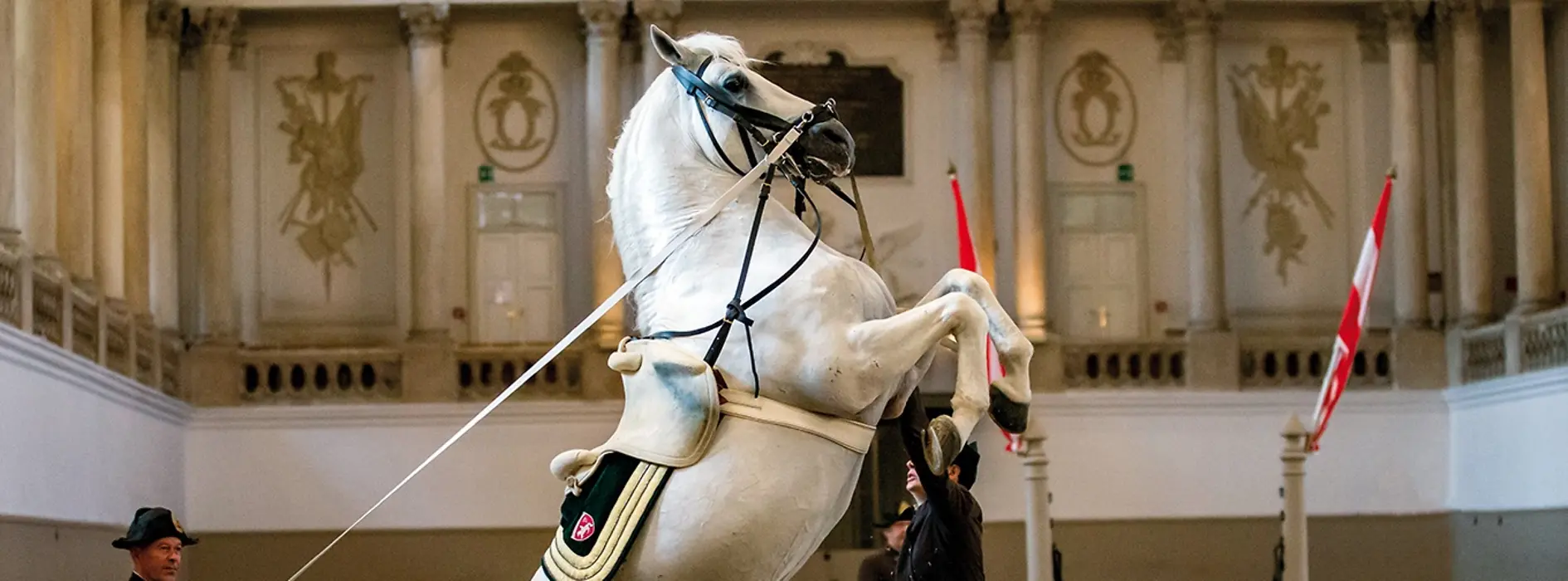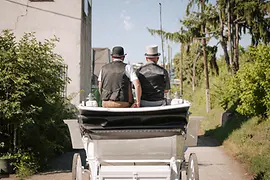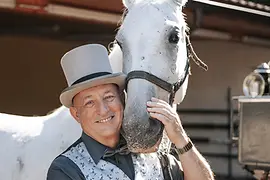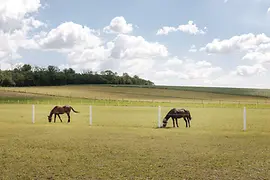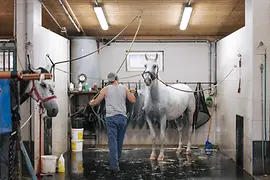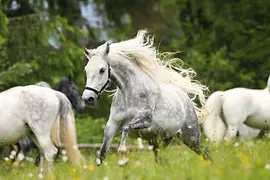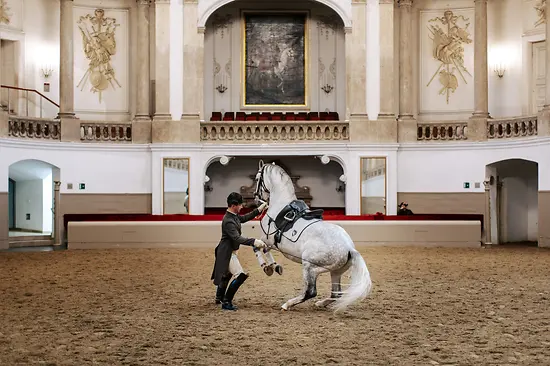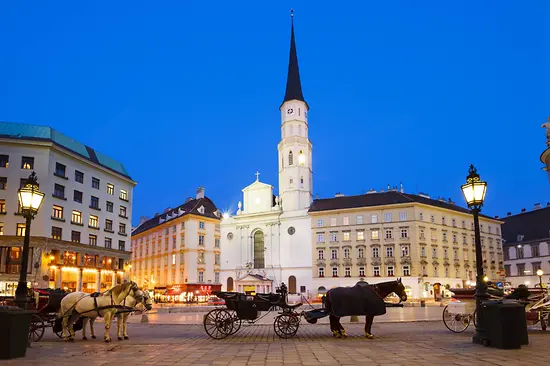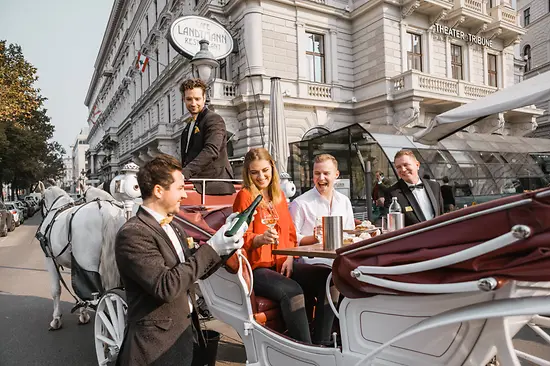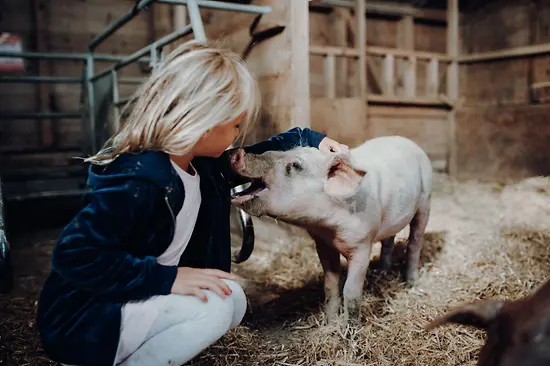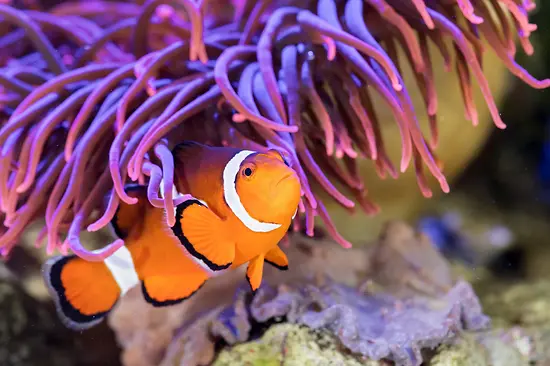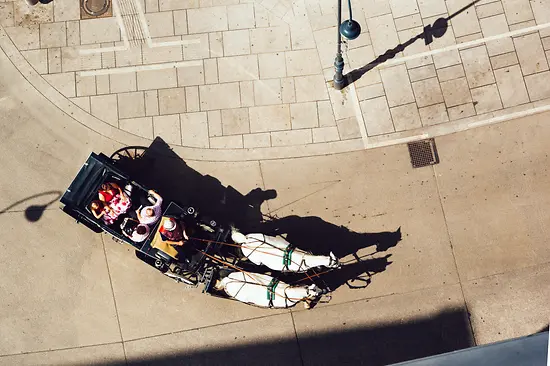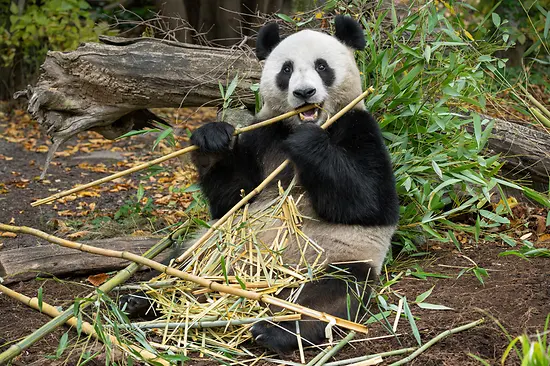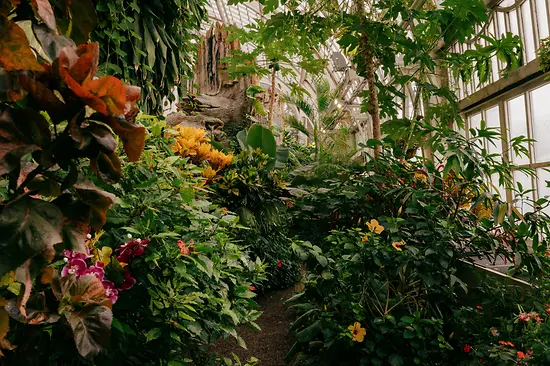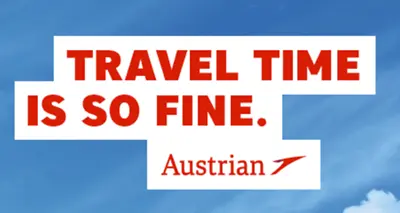Vienna’s Famous Horses
Carriage horses are early risers. Their working day starts at 7am, in the stables of traditional Viennese business Fiaker Paul in Simmering. When we arrive at eight o’clock, there’s already lots going on. The stable boys are in the middle of feeding and cleaning the horses, making them ready and presentable for the city. “The Fiaker (Viennese carriage drivers) arrive at nine. They look over ‘their’ horses and the equipment to make sure everything is in order. Then the horses are hitched to the traditional carriages – some of which are as much as 140 years old – and make their way into town,” company spokesperson Christian Gerzabek, who sometimes also works as a carriage driver, tells us.
It’s clear from the moment we arrive that the stables are modern and excellently maintained. The horses are curious, and many of them are nuzzling and affectionate. Fiaker Paul also offers “backstage tours”, so anyone can see this at first hand. Gerzabek: “We have nothing to hide here. There are lots of people who would like to get to know the horses up close. And they can do that here.” A particularly special treat: visitors can ride in one of the carriages into the city center, and discover littleknown parts of Vienna on the way. At 11 o’clock, the perfectly presented horses, carriages, and drivers are at their stands in the old town.
Applause for the Fiaker
Johann Paul has about 80 horses. Most of them come from Hungary. “They are already trained for pulling coaches there,” he tells us, adding: “But that does not mean they are ready for driving on the street in Vienna by any means.” Training takes between five months and a year, depending on how ready to learn or easily startled the horses are. To begin with, the horses practice at an estate in Göttlesbrunn-Arbesthal in Lower Austria, then in the grounds of Schönbrunn Palace (where Johann Paul’s carriages also go). They aren’t driven into the city center until they are really ready for the streets.
The driver and the horses are a team. On the door of each horse’s stall it states whether the horse should be harnessed on the right or the left. And the drivers are thoughtful in caring for their horses. “During the corona crisis, many of the drivers came to the stables to exercise their horses, without pay. The bond is very strong,” says Gerzabek. In fact, during the ban on carriage rides due to Covid-19, Gerzabek came up with a great idea himself. “We used three coaches to deliver free meals from the Intercontinental Hotel to residents in the third district.” People’s reaction was thoroughly positive: “They applauded us. I had the feeling that the Viennese love the Fiaker, who have been trotting around town since 1720.”
Retirement Home
Just like all workers, Paul’s carriage horses get an annual holiday. They spend it in Göttlesbrunn- Arbesthal, Lower Austria, where ten hectares of meadowland is reserved for them. The retirement home for Paul’s horses is also located here. “The horses work for about 15 years. When we notice they’re no longer enjoying the work, they are discharged from their duties, so that they have the chance to enjoy a good retirement,” Gerzabek explains. And: “They spend it together with their partner, with whom they spent many years working. In the fields, they always stand together.”
As we are saying goodbye, he remembers something else. There are quite a few white horses in the meadows in Lower Austria, and in the stable in Simmering in Vienna. Gerzabek tells us that many of them are Lipizzaner, from a Hungarian strain. They aren’t the Lipizzaner who appear in the performances at the Spanish Riding School, but it’s still pleasing to see the white horses waiting at the horse-drawn carriage stand in front of the Riding School on Michaelerplatz…
The true stars of the equine world have their home just a few steps away – the Lipizzaner stallions of the Spanish Riding School, a centuriesold institution. It is the oldest riding school in the world, and the only place where the classic equestrian skills in the Renaissance tradition (the haute école) are still practiced in their original form, a tradition spanning some 450 years.
Round-the-Clock Care
The Lipizzaner are early risers, too. The stables come to life at 6am. “The stallions are fed and groomed, and the stables are cleaned out,” explains Andreas Hausberger, Chief Rider at the Spanish Riding School. 74 white stallions are stabled at the Vienna location in the Hofburg, and they require care every day. At 7am their working day begins, with training including a ride in the Burggarten nearby, as well as exercise in world’s largest horse walker, in the summer riding school. Lunch is at 1pm, and they are fed again at 5pm.
Long-standing tradition and modern horse keeping practices are brought together here, in the center of Vienna. “The classic equestrianism of the haute école is based on the horse’s voluntary cooperation, and on systematically developing the horse’s entire muscular system, so that it is able to practice the most difficult lessons over years without sustaining any injury. Modern scientific advances in horse keeping and horse training have always played a major role at the Riding School, and we apply them to support the wellbeing of the horses,” says Hausberger. And regarding their wellbeing – grooms, vets, chiropractors, feed experts, saddlers, farriers, stablehands, and of course the riders themselves take care of the white superstars around the clock, seven days a week.
Return to Piber
The training takes six years to complete. Only then are the horses ready to appear before the public. Like the carriage horses, the Lipizzaner are also entitled to an annual vacation. Hausberger explains: “All of the Stallions enjoy a holiday at our training center in Heldenberg, Lower Austria. They spend seven weeks there every summer, where they get to enjoy long rides and the extensive paddocks.
When they reach retirement age, the Lipizzaner stallions come full circle: they return to the place they were born, the Piber Lipizzaner stud in Styria. This is where the noble horses are bred. About 40 foals, whose coloring is still brown-black during their first few years, are born here each year. Only the best stallions are transferred to the Riding School in Vienna.
The impact of the corona crisis was felt here, too. Performances had to be canceled, but, says Hausberger: “Training for all the stallions carried on without interruption. To minimize the risk of infection, we worked in four different groups – at the Riding School and at the training center in Heldenberg.” And: “All of the riders stayed healthy,” as did the horses. Visitors have the chance to confirm this for themselves: the Riding School also offers exclusive tours behind the scenes, so that everyone can have an opportunity to meet the most famous horses in the world up close, just as we did.
Text: Robert Seydel
- Michaelerplatz 1 (Besucherzentrum/Visitor Center), 1010 Wien
-
+43 1 533 90 31 0 (Infohotline)
- office@srs.at
- http://www.srs.at
Vienna City Card
5 % discount in the store on presentation of the VCC
Discount is valid on the training. Reduced ticket only available on site.
Highseason: April - October and December
Seated: Standard ticket price: 20 € (Savings: 2 €)
Standing place: Standard ticket price: 18 € (Savings: 2 €)
Off season: January - March and November
Seated: Standard ticket price: 19 € (Savings: 2 €)
Standing place: Standard ticket price: 17 € (Savings: 2 €)
Opening times
- Mo - Su, 09:00 - 16:00
Accessibility
Parking spaces for people with disabilities
in the Inner Courtyard
Wheelchair accessible restroom available.
Request for wheelchair spaces at morning exercises, tours or performances (prices and availability) must be made by email: office@srs.at.
Spanish Riding School
On a backstage tour visitors get to see the inside of the Lipizzaner stables, as well as the Baroque Winter Riding School (formerly only accessible to members of the imperial family), and the summer exercise ground, with the world’s biggest horse walker.
www.srs.at
Fiaker Paul
Visits to the stables, horsedrawn carriage rides, and even a culinary tour in a Fiaker can be booked at www.ridingdinner.com. Insider tip: get a 20% discount on these experiences with the Vienna City Card Experience Edition. Further info at www.fiaker-paul.at
